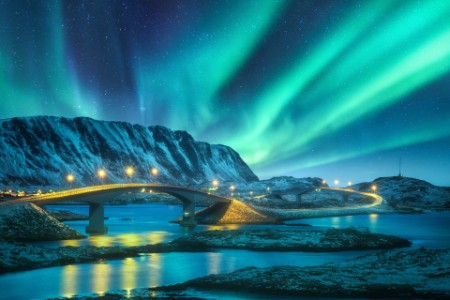Sustainability at the core of aquaculture
The future of aquaculture depends on a continuous focus on sustainable solutions.
Emerging as a crucial aspect in salmon farming, feed, which accounts for a substantial amount of both production costs and farmgate emissions, is receiving heightened attention in the industry. The diminishing availability of conventional marine ingredients has prompted the industry to turn its focus toward innovative feed ingredients such as insect meal, single-cell proteins and microalgae.
While these newcomers make up a small fraction of the total feed composition, their potential is vast. It's noteworthy that the salmonid feed sector is predominantly operated by a handful of major producers that have control over the major shares of salmon feed output.
Sustainability also remains at the core of the industry's operations. In this year’s analysis, we focus on how the industry can improve circularity within waste handling and the use of plastic, particularly in net pens and other aquaculture equipment. Meanwhile, the industry continues to focus on the utilization of artificial intelligence (AI) for production and digital innovation.
Aquaculture’s AI wave: tech beneath Norwegian waters
While significant progress has been made throughout the whole value chain, there are certain areas where the use of AI and tech can be improved. The industry can benefit more from machine learning algorithms for predicting and preventing diseases, while image recognition technology can be further employed to monitor fish health continuously. There is also room for improvements in providing real-time analytics, refining models on fish behavior and enhancing digital platforms for efficient farm operation.
Norway, as the world's leading salmon producer, has adopted several AI and tech solutions. Companies are using AI-powered monitoring systems for early detection of diseases and parasites such as sea lice. Drones and robots are employed for tasks like sea floor inspections. AI is also used to monitor fish health and behavior, predict diseases, control feed quantity and timing, and improve breeding processes. This enhances yield and quality, minimizes environmental impact and reduces operational costs.
The future of AI and emerging tech in Norwegian aquaculture is promising and is expected to transform fish farming significantly. A more widespread adoption of these technologies is anticipated as the industry seeks to boost efficiency and sustainability. With more advanced AI models, it will be possible to identify emerging diseases early and adjust feeding and treatment plans swiftly. In the long term, the application of technologies like AI, IoT, robotics and sensors will lead to the creation of smart, eco-friendly aquaculture systems with minimal human intervention.
Toward a resilient future for aquaculture
Drawing from its history, the Norwegian aquaculture industry has been nothing short of resilient, even when tides of significant political happenings, a world-reaching pandemic, high inflationary pressures and stiff global supply constraints have flanked the industry. The performance of this industry across different spectra, in turn, has hinted toward a future that will demand careful considerations for both short-term realities and long-term aspects of sustainability.
It will be the industry's calibrated response to these concerns and disruptions that will significantly shape its business framework and reputation in sustainability, while one thing remains clear — the commitment and capacity of Norwegian aquaculture on continuing to adapt and to innovate effectively will determine how promising and sustainable the industry’s future will be in the long run.


